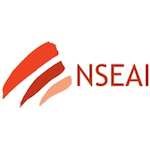
Nonverbal Verbals
Aug 21, 2022
Studies tell us that 55% of communication is nonverbal (Albert Mehrabian, 1967).
If that seems a little extreme to you, it is probably because we take so much of that type of communication for granted. Most of us recognize when someone is upset or excited. There may be nonverbal communication that accompanies verbal communication that indicates a degree of involvement, i.e., clenching one’s fist as you declare that you are angry. That nonverbal certainly emphasizes that you are angry, yet for many of our children that clenched fist would not register. Even if they see the action, they must understand the action before there can be any meaning attached.
In this email world where so many of us are looking at screens for so many hours in a day, we do not realize how much communication we lose with over-reliance on screens large and small. We also do not realize how important teaching how to communicate non-verbally is for the student with social cognition issues. Not understanding social rules can quite literally lead to molestation, mistreatment, and assault. It is one thing when the 3-year-old does their cute thing and greets EVERYONE with a running bear hug. It is something else when the now 6ft 2in 16-year-old tries to do the same thing. Somehow, it just isn't cute anymore and the behavior is seen as threatening.
REASONS FOR NONVERBAL COMMUNICATION
- Repeating – strengthen verbal message, point to object
- Conflicting – lying, uncertain, frustration, mixed message communication
- Complementing – elaborating, remember better, and achieve communication goals
- Substituting – specific feelings and intentions, used with verbal communication
- Regulating – regulates turns and communication, touching is to signal you are next or intent to interrupt
- Accenting/moderating – can change interpretation, touch, pitch, and gesture, shake fist
FORMS OF NONVERBAL COMMUNICATION
Changes with situations, gender, mood, emotion, age and culture.
- Body Movement- Kinesics – Communication
- Body language, gestures, facial expression, eye contact vs mutual gaze, smiling, winking, nodding, rolling eyes
- Eye contact – Oculesics - Communication
- Eye Contact, interest, attention, involvement, gaze amount and frequency, levels of fixation, blink rate, pupil dilation
- Gesture Communication
- Communicate in place of speech
- Wave goodbye, imagery/hold ears, smiling, hand up, sighing, cross arms
- Posture Communication
- Body orientation/lean in or away/matching, open body language
- Touch- Haptics-Communication
- Communication with touching, handshakes, holding hands, back slapping
- Distance Between – Proxemics – Communication
- Communication with physical space
- hula hoop standing
- street 45 feet with only slight gaze and smile
- elevator etiquette
- Timing- Chromemics – Communication
- Communication with time, pauses, interruptions, graciousness
- Object Communication
- Clothing, hairstyles, symbols
- Emotion- Paralanguage / Vocalics / Prosodics Communication
- Convey emotion through speaking style, tone, pitch, rhythm, intonation and accent/stress, laughing, crying, yawning, yelling
- Vocal segregates: uh-huh equals yes equals I am listening, hum to notify listening
- Voice quality/supra-segmental phonemes: volume, pitch, tempo, rhythm, resonance/nasality

The IEP DEVELOPMENT EXPERTS
Make sure you SUBSCRIBE to the blog.
NSEAI's online courses efficiently lead parents and professionals to an expert level of education advocacy in just 12 days of on-demand courses that you can do at your convenience.
OUR CHILDREN DO NOT HAVE TIME TO WASTE.
LEARN TO DEVELOP A CHILD-FOCUSED IEP CORRECTLY FROM THE START vs JUST ACCEPTING A LEGALLY SUFFICIENT ONE!
CHANGE THEIR LIVES NOW
AUTHORS
Marie Lewis is an author, consultant, and national speaker on best practices in education advocacy. She is a parent of 3 children and a Disability Case Manager, Board Certified Education Advocate, and Behavior Specialist Consultant. She has assisted in the development of thousands of IEPs nationally and consults on developing appropriately individualized IEPs that are outcome-based vs legally sufficient. She brings a great depth of expertise, practical experience, and compassion to her work as well as expert insight, vision, and systemic thinking. She is passionate and funny and she always inspires and informs.
MJ Gore has an MEd in counseling and a degree in elementary education and natural sciences. She worked as a life-skills and learning support teacher She has been honored with the receipt of the Presidential Volunteer Service Award. She is the Director and on the faculty at the National Special Education Advocacy Institute. Her passion is social justice, especially in the area of education. She is a Board Certified Education Advocate who teaches professional advocates, educators, and clinicians the best practices in education advocacy.
